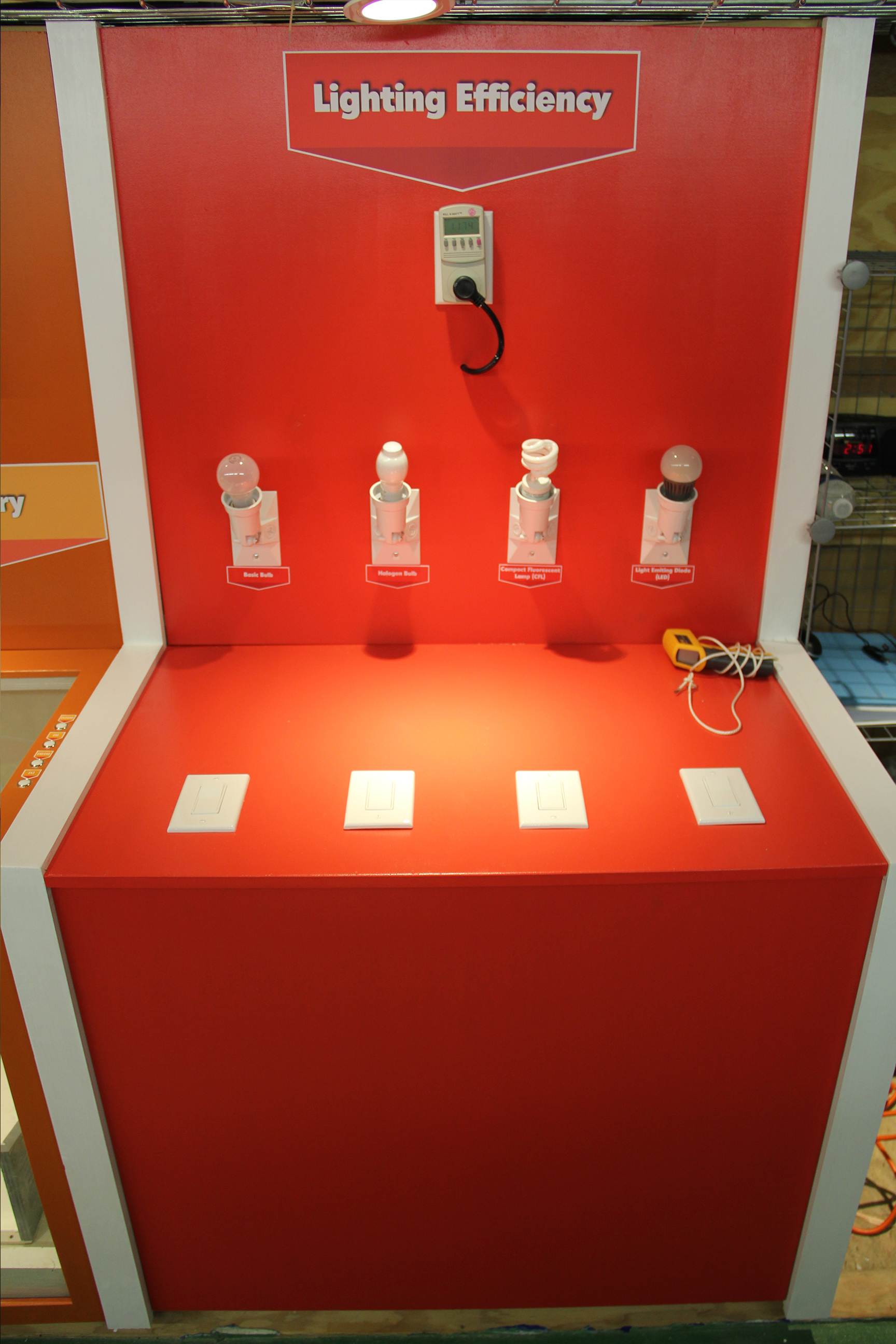-


Introduction:
Changing the lighting is probably the easiest way to reduce the carbon footprint of your home since the products seen at this station are readily available to use. Students will already be familiar with the use of compact fluorescent bulbs and many brands of desk lamps containing LED bulbs. Students will be able to observe different types of lighting and understand why they are considered a green technology.
Objectives:
Students will
- compare the brightness and heat produced by different kinds of light bulbs qualitatively
- compare the power needs, energy efficiency and cost quantitatively
What the student will experience at this station:
Students will observe the brightness and qualitatively compare 4 different types of lighting. By placing their hands a short distance above each bulb they will be able to compare the heat wasted when each bulb is lit. A power monitor will show that in each case you are getting roughly the same amount of light from each bulb. However the amount of electricity needed to light each bulb differs considerably. Students will be able to identify and compare which bulb is the most energy efficient and compare the costs of using each light bulb.

